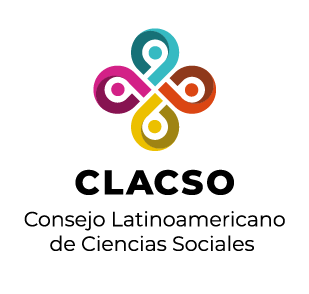Red de Bibliotecas Virtuales de Ciencias Sociales en
América Latina y el Caribe

Por favor, use este identificador para citar o enlazar este ítem:
https://biblioteca-repositorio.clacso.edu.ar/handle/CLACSO/255644Registro completo de metadatos
| Campo DC | Valor | Lengua/Idioma |
|---|---|---|
| dc.creator | Araya Pochet, Carlos | - |
| dc.date | 2021-10-07T01:40:16Z | - |
| dc.date | 2021-10-07T01:40:16Z | - |
| dc.date | 1976-01 | - |
| dc.date.accessioned | 2025-09-17T02:12:06Z | - |
| dc.date.available | 2025-09-17T02:12:06Z | - |
| dc.identifier | 1012-9790 | - |
| dc.identifier | 2215-4744 | - |
| dc.identifier | https://www.revistas.una.ac.cr/index.php/historia/article/view/11925/16444 | - |
| dc.identifier | http://hdl.handle.net/11056/21536 | - |
| dc.identifier.uri | https://biblioteca-repositorio.clacso.edu.ar/handle/CLACSO/255644 | - |
| dc.description | La minera se convertirá entre 1821 y 1843 en una de las opciones económicas que mas preocuparon a los costarricenses en la búsqueda de una economía que superara el relativo aislamiento colonial y permitiera establecer nexos permanentes con el mercado mundial. De allí que esta actividad, al igual que la caña de azúcar, el tabaco, el café y las materias extractivas, se convirtieron en ramos de la producción, que el país trataba de impulsar con mayor o menor éxito para su plena inserción en el modelo de desarrollo hacia afuera que se estableció en los mecanismos de división del trabajo re elaborados después de la Revolución Industrial y en la que en Costa Rica , como en el resto de América Latina, le correspondería jugar el papel de administrador de materias primas y productos agrícolas dentro de la orbita del incipiente capitalismo decimonónico. | - |
| dc.description | The mining company will become between 1821 and 1843 one of the economic options that most concerned Costa Ricans in the search for an economy that would overcome the relative colonial isolation and allow permanent links to be established with the world market. Hence, this activity, like sugar cane, tobacco, coffee and extractive materials, became branches of production, which the country tried to promote with greater or lesser success for its full insertion into the model. outward development that was established in the mechanisms of division of labor re-elaborated after the Industrial Revolution and in which in Costa Rica, as in the rest of Latin America, it would correspond to play the role of administrator of raw materials and agricultural products within the orbit of the incipient nineteenth-century capitalism. | - |
| dc.description | Universidad Nacional, Costa Rica | - |
| dc.description | Escuela de Historia | - |
| dc.format | application/pdf | - |
| dc.language | spa | - |
| dc.publisher | Editorial de la Universidad Nacional | - |
| dc.rights | Acceso abierto | - |
| dc.rights | http://creativecommons.org/licenses/by-nc-sa/4.0/ | - |
| dc.source | Revista de Historia, no.2 enero-junio 84-125 1976 | - |
| dc.subject | COSTA RICA | - |
| dc.subject | HISTORIA | - |
| dc.subject | HISTORY | - |
| dc.subject | MINERÍA | - |
| dc.subject | MINING | - |
| dc.subject | SIGLO XIX | - |
| dc.subject | COMERCIALIZACIÓN | - |
| dc.subject | COMMERCIALIZATION | - |
| dc.title | La minería en Costa Rica (1821-1843) | - |
| dc.type | http://purl.org/coar/resource_type/c_6501 | - |
| Aparece en las colecciones: | Facultad de Ciencias Sociales - UNA - Cosecha | |
Ficheros en este ítem:
No hay ficheros asociados a este ítem.
Los ítems de DSpace están protegidos por copyright, con todos los derechos reservados, a menos que se indique lo contrario.